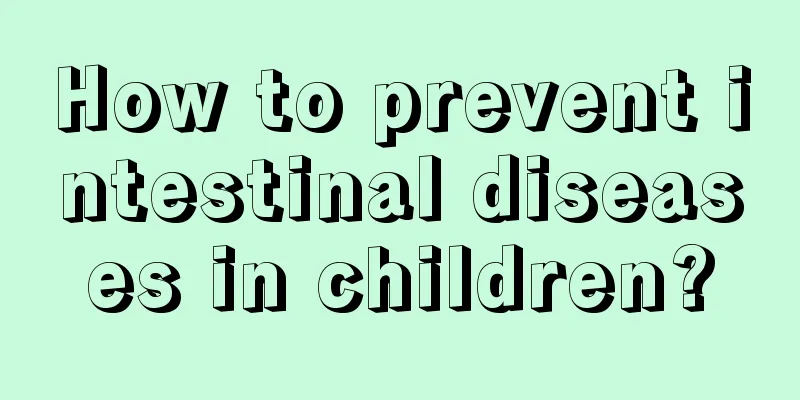Why does my child have lower abdominal pain? These are the common reasons!

|
Lower abdominal pain is a symptom that is easy to occur in adult women because many gynecological diseases can cause this symptom. However, it is not common for children to experience lower abdominal pain. If a child has lower abdominal pain, parents must pay attention to it. It is best to take the child to the hospital for a detailed examination and timely treatment. Do not miss the best time to treat the disease. 1. Medical abdominal pain Generally refers to abdominal pain caused by medical diseases, which usually do not require surgical treatment. They mainly include: ① Intra-abdominal diseases: acute gastritis, gastroenteritis, intestinal spasm colic, mesenteric lymphadenitis, viral hepatitis, urinary tract infection, bacterial dysentery, etc. ② Extra-abdominal diseases: Diseases outside the abdominal cavity can also manifest as abdominal pain, and may even be the first symptom. Including respiratory diseases (upper respiratory tract infection, tonsillitis, lobar pneumonia, acute pleurisy), cardiovascular diseases (acute heart failure, pericarditis, myocarditis), allergic diseases (allergic purpura, urticaria, angioedema), nervous system diseases (intercostal neuralgia, abdominal epilepsy), metabolic diseases (hypoglycemia, uremia, porphyria), infectious diseases (typhoid fever, epidemic cerebrospinal meningitis) as well as sepsis, herpes zoster, lead poisoning, etc. 2. Surgical abdominal pain The onset is usually sudden, the abdominal pain is obvious, and emergency surgery is often required. The main ones include acute appendicitis, gastric and duodenal ulcers with perforation, mechanical intestinal obstruction, intussusception, mesenteric artery embolism, acute intestinal torsion, ileal diverticulitis with perforation, obstruction, primary or secondary peritonitis, incarcerated inguinal hernia, urinary tract stones, hydronephrosis, liver rupture, spleen rupture, ovarian cyst torsion, testicular pedicle torsion, iliac fossa abscess, etc. 3. Nonspecific abdominal pain Nonspecific abdominal pain is a common psychosomatic disease in children, with a prevalence of 5-10%. It is paroxysmal and lasts for a period of time before resolving on its own. The pain is generally not severe and may be accompanied by symptoms such as nausea and vomiting. The location of the pain is variable, most commonly in the upper abdomen or around the umbilicus. Clinical or laboratory examinations often show no positive findings. The cause is unknown, but it may be related to emotional factors or excessive anxiety of family members. It can manifest as school phobia, childhood depression, eating disorders, childhood hysteria, etc. |
<<: What is the solution for eczema in children?
>>: What causes nose bleeding in children?
Recommend
Why do children bite their nails?
It is a common phenomenon for children to bite th...
What are the height-increasing drugs for children?
Height is now very important for both men and wom...
One-month-old baby has milk curds when defecating
Babies usually need to defecate after birth. Pare...
What should I do if my baby has a lot of phlegm in his throat?
It is very common for babies to have phlegm in th...
What should children pay attention to when they have measles
Children are at high risk of measles. Although th...
What should I do if my child doesn’t want to sleep?
Parents often encounter a headache problem, that ...
What should I do if my baby has a stuffy nose for one month?
Many adults experience nasal congestion when they...
Can vitiligo in children be cured?
The growth process of a child from infancy to adu...
How to improve children's memory
Many parents cannot accept the symptoms of childr...
2 month old baby has not had a bowel movement for 15 days
We all know that when the baby is two months old,...
Are the symptoms of enteritis in children obvious?
Children are more likely to develop enteritis bec...
Reasons why children don't sleep and related treatment suggestions
Newborn fetuses will have varying degrees of nigh...
Baby's eyes and nose are blue
The blue bridge of the baby's nose between th...
What are the causes and treatments for four-year-old children grinding their teeth while sleeping?
We often find children snoring after they fall as...
What to do if a five-year-old child has anemia?
Anemia is not unfamiliar to most people, because ...









